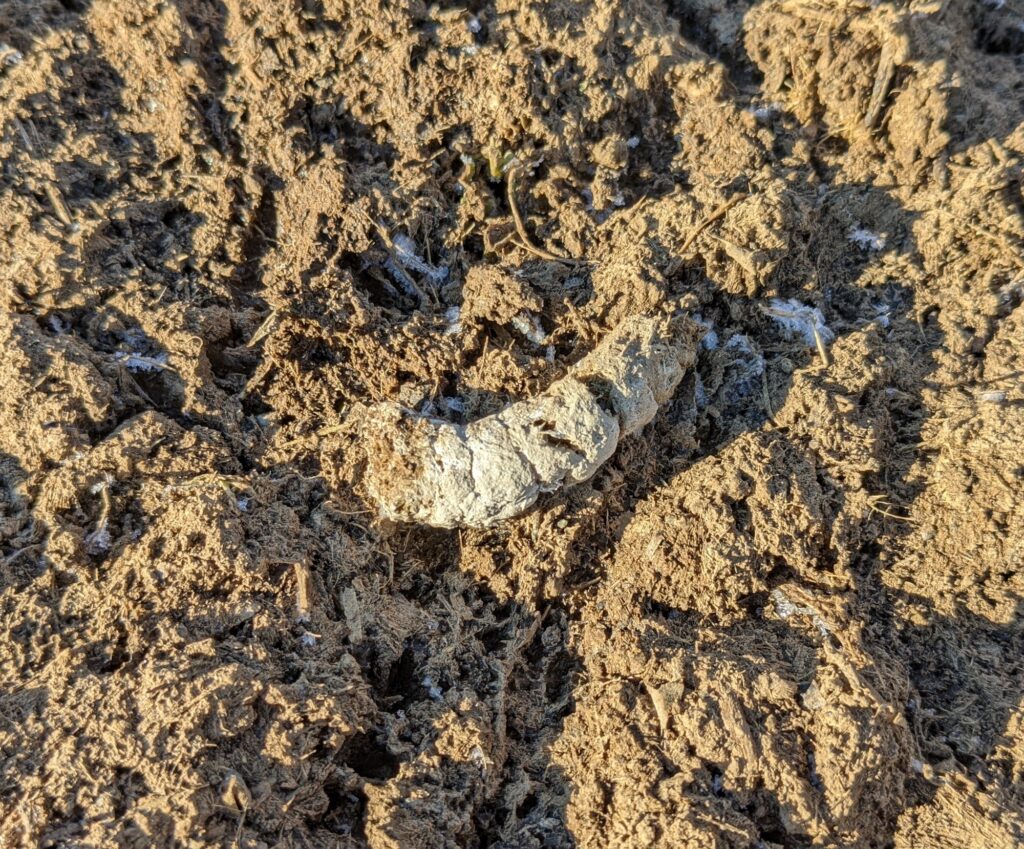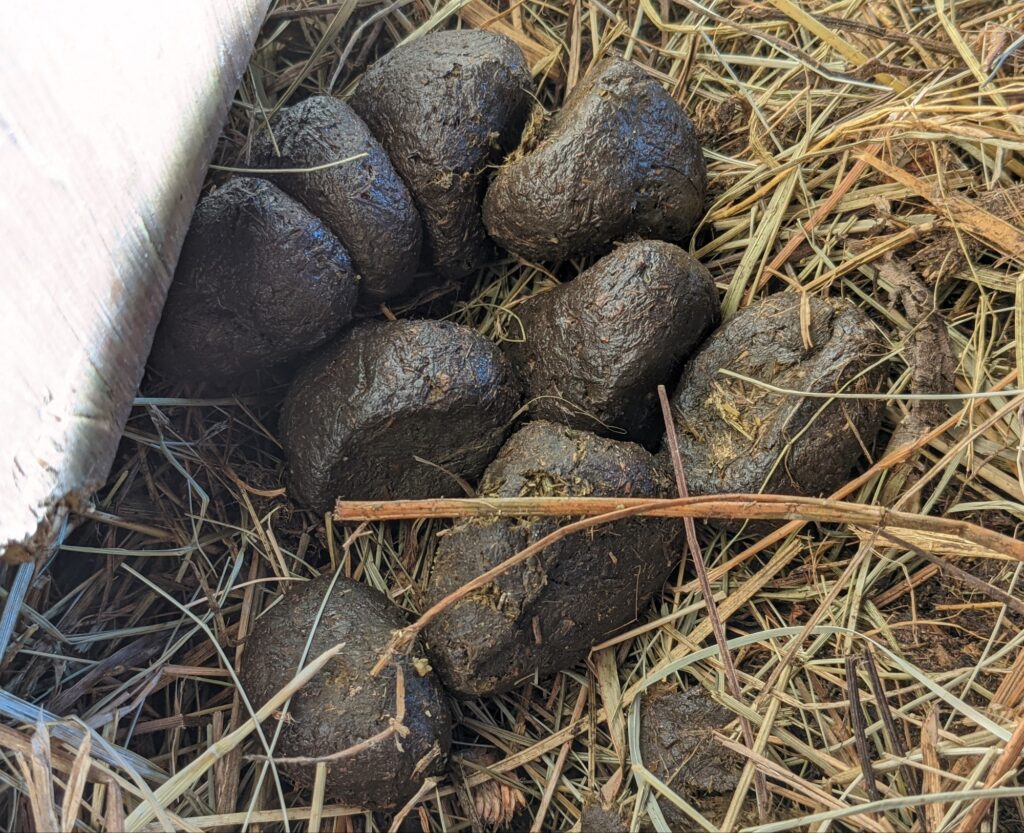
Ah, the dirty little (not so) secret that farmers and homesteaders often sidestep when discussing the nuts and bolts of raising animals: poop. Poop is important, and I think that anyone who raises animals, whether as livestock or as pets, should be looking at it.
So, if you made it this far, the reality of excrement hasn’t insulted your delicate sensibilities to the extent that it prevents you from reading and considering an easily-accessible source of information about the health of your animals. Good – if you can’t look at your animals’ poop, you likely don’t have what it takes to be successful in animal husbandry.
Unless you’re working hard to avoid seeing it, it will be ubiquitous when you raise animals: in coops, in pastures, and – if you’re like me – on you more than you wish. It may not be pleasant, but it’s a part of farming.
I start by looking at the poop as I scrape the main coop’s poop board (the ledge below the roosts where the majority of poop falls overnight). By doing so, I can identify issues like parasites (such as roundworms), and potential problems, like bloody stool. When I was new to raising chickens, I had read about the devastating effects of coccidiosis on chicks, and was a bit paranoid about every speck of reddish material I saw in poop. With experience and, sadly, a couple of losses to coccidiosis early on, I learned to distinguish between a dangerous bloody poop and normal poop containing shed intestinal lining: the shed intestinal lining, if examined closely, isn’t the same color as blood, and it’s a bit stretchy. If you’re a newbie, though, it can be alarming.

Chicken poop varies in smell, consistency, and color, depending on factors like feed, the weather, and whether it’s a “regular” or a cecal poop (you’ll know a cecal poop by its distinctive odor and texture – it’s exceptionally smelly and typically looks more runny than “regular” poop). Chickens don’t urinate like humans or dogs do – the white stuff that’s often on the top of the poop is urates. A neat trick: pee and poop in one package!
I can tell when my chickens have been drinking more liquid than usual (and their poop is generally well-formed but moist because they eat fermented feed) because the poop will be “splatty” on the poop board. This can happen when the weather is wet, for example. A few splats from time to time don’t cause me concern, unless the reason isn’t obvious or there are other red flags, like strange color or repeated diarrhea from the same bird.
Let me provide examples of how feed will affect poop: once (years ago, before I knew better), I fed my chickens some battered fish fillets. They gobbled it up, but their poop was horrible – it smelled just like the fish. The chickens haven’t eaten fish since then, with the exception of shrimp shells. Another example is how markedly the odor of chicken poop is reduced by feeding fermented feed: I have month old chicks inside because of the very cold weather, and their brooder trays (catching the poop) were getting stinky every day. I transitioned them to fermented feed – a one day process – and the odor has greatly decreased. Hooray for probiotics!
I can also tell by looking at the goose poop whether the geese are eating grass or mostly feed. Since it’s winter here and the grass isn’t growing, they’ve been eating primarily feed, so their poop, while solid and normal, doesn’t sport the vibrant green color it does the rest of the year, when they can graze pastures.

The pigs are also limited to hay this time of year, but they also get alfalfa in their feed. Their poop is solid, well-formed, and a normal color. I’d be concerned if I saw loose stools or strange coloration, but these are representative of how they typically look (though sometimes longer, like a jumbo dog poop).

I mentioned earlier in the post that I have encountered coccidia in the past. It happened twice, with hatchery chicks, and the second time nearly wiped out a group of juvenile birds. Coccidiosis can be treated if caught early enough, but by the time bloody stool is seen, it’s often too late. I keep Corid (amprolium, which is not an antibiotic) on hand, just in case, but haven’t had any problems with coccidia since I no longer buy hatchery stock, I feed probiotics from day 1 and throughout the birds’ lives, and I expose my birds to soil (which is where the protozoa that causes coccidiosis lives) from an early age. Raising healthy birds with strong immune systems has been key to preventing coccidiosis on our farm.
Let’s not forget that poop can be useful, too. Spring is coming in the northern hemisphere, and properly-composted animal manure (with the exception of rabbit poop, which can be applied to plants immediately) is an excellent, nutrient-rich fertilizer. Remember the surprise pig-planted musk melons that we enjoyed a couple of summers ago? Those vines grew like nothing I’ve seen before in that rich, composted pig manure. And in the pastures, it’s easy to see where the chicken tractors have been because the grass grows back noticeably more lush and thick in those areas.
So, if you’re not already, take a good, long look at that poop. It’s natural, it’s critical to life (the inability to poop can be fatal), and it contains a wealth of information. And, hey, everybody poops!
